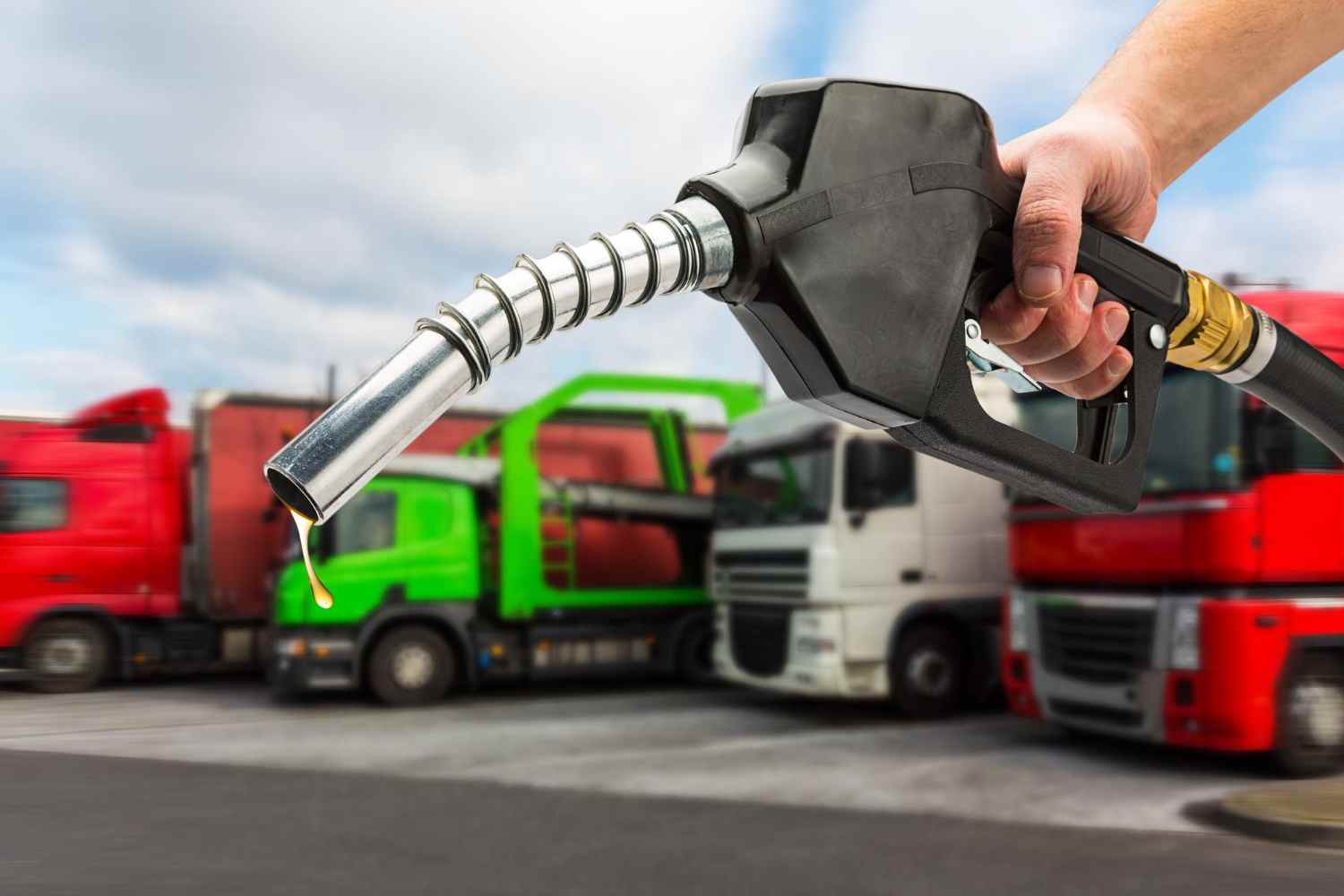In recent years, the term green diesel has gained popularity as the world moves towards cleaner, renewable energy sources. However, many people still confuse it with red diesel or biofuel. So, what exactly is green diesel? How does it differ from traditional fuels, and is it really as environmentally friendly as it sounds? This comprehensive guide explains everything you need to know about green diesel, its uses, benefits, challenges, and how it compares to red diesel in the UK.
Understanding What Green Diesel Is
Green diesel, also known as renewable diesel, is a type of fuel made from renewable feedstocks such as vegetable oils, animal fats, or waste cooking oil. Unlike fossil-based diesel, it’s produced through advanced chemical processes, such as hydrotreating, which converts natural fats into hydrocarbons chemically identical to petroleum diesel.
In simple terms, green diesel performs just like traditional diesel but has a lower carbon footprint. This makes it a cleaner alternative that’s compatible with existing diesel engines and fuel systems.
How Green Diesel Differs from Biodiesel
Many people use the terms green diesel and biodiesel interchangeably, but they are not the same.
- Biodiesel is produced via transesterification, yielding fatty acid methyl esters (FAME). It contains oxygen and can sometimes cause compatibility issues with older engines.
- Green diesel, however, is produced by hydrotreating, yielding a fuel that is almost chemically identical to regular diesel. This means it doesn’t cause issues like cold-weather gelling or filter blocking, which biodiesel can sometimes do.
While both are renewable, green diesel is superior in terms of performance and stability.
Green Diesel vs. Red Diesel
When comparing red diesel vs. green diesel, the key differences lie in composition, usage, and environmental impact.
- Red diesel is regular diesel with a red dye added, primarily used for off-road applications such as agriculture, construction, and heating. It benefits from a lower tax rate because it’s not intended for road use.
- Green diesel, on the other hand, is a renewable, cleaner alternative to diesel, designed to reduce emissions and support sustainability goals. It can be used in standard diesel engines without modification, making it a flexible, environmentally friendly option.
In essence, red vs. green diesel boils down to purpose: red diesel is a rebated fossil fuel for specific industries. In contrast, green diesel is a cleaner, renewable alternative for all types of diesel engines.
How Green Diesel Is Made
The production of green diesel involves refining renewable materials such as vegetable oils, animal fats, or used cooking oils through a process known as hydrotreating. During this process:
- The feedstock is mixed with hydrogen gas under high pressure.
- The mixture passes through a catalyst that removes oxygen, sulphur, and nitrogen.
- The resulting hydrocarbons are purified and refined into green diesel.
This advanced method ensures the fuel has high purity, excellent stability, and performance characteristics equivalent to those of conventional diesel.
Environmental Benefits of Green Diesel
Green diesel is gaining traction because it provides several environmental benefits compared to traditional fuels:
- Lower Carbon Emissions: Green diesel can reduce greenhouse gas emissions by up to 90% compared to fossil diesel.
- Cleaner Combustion: It burns more cleanly, reducing particulate matter, nitrogen oxides, and carbon monoxide.
- Renewable Feedstocks: It uses sustainable materials such as used cooking oil, helping recycle waste products.
- No Engine Modifications Required: Green diesel is compatible with existing diesel engines, making it a drop-in replacement.
- Reduced Dependence on Fossil Fuels: It supports energy diversification and helps nations reduce reliance on crude oil imports.
Green Diesel in the UK Market
In the UK, green diesel is becoming increasingly available through fuel suppliers who aim to offer sustainable alternatives. Many commercial fleets, construction firms, and agricultural operators are switching to HVO (Hydrotreated Vegetable Oil), the most common form of green diesel, because of its cleaner combustion and long shelf life.
The government’s drive towards net-zero carbon emissions by 2050 has further accelerated interest in green fuels. While red diesel still plays a significant role in certain industries, green diesel is expected to dominate the low-emission energy market in the coming years.

Green Diesel vs. Red Diesel: Key Differences
To make the comparison clearer, here’s how green diesel vs. red diesel stand apart:
Feature | Green Diesel | Red Diesel |
Source | Renewable (vegetable oils, fats) | Fossil fuel (mineral diesel with dye) |
Environmental Impact | Low emissions, sustainable | Higher emissions, not renewable |
Usage | Any diesel engine (road/off-road) | Restricted to off-road machinery |
Colour | Clear or slightly yellow | Red-dyed for identification |
Tax | Standard road tax | Rebated (lower tax rate) |
Performance | Equal to or better than regular diesel | Same as regular diesel |
Storage Life | Up to 10 years | Around 1 year |
Carbon Reduction | Up to 90% | None |
This table highlights why many businesses are shifting from red to green diesel to achieve long-term sustainability and comply with environmental regulations.
Potential Challenges of Green Diesel
Despite its many advantages, green diesel isn’t without challenges:
- Higher Cost: The production process is more complex and expensive than refining fossil diesel, which raises its price.
- Limited Availability: While growing in popularity, green diesel is still not as widely distributed as red or white diesel.
- Feedstock Supply Issues: Demand for renewable oils and fats can put pressure on agricultural production if not managed sustainably.
However, as technology improves and demand increases, prices are expected to stabilise, and production efficiency will continue to improve.
How to Switch from Red Diesel to Green Diesel
Transitioning from red diesel to green diesel is simple, as both fuels share similar properties. To switch:
- Clean the Fuel Tank: Ensure no contamination from old fuel remains.
- Check for Compatibility: Green diesel is compatible with most engines, but older systems should be inspected for seal compatibility.
- Start with a Blend: Mixing green diesel with red or white diesel initially helps the system adjust.
- Monitor Performance: Keep an eye on filters and engine performance during the first few uses.
The Future of Green Diesel
With increasing environmental regulations and the push towards renewable energy, green diesel is positioned to play a key role in the UK’s energy transition. Companies and consumers alike are recognising its value as a clean, efficient, and sustainable alternative to fossil fuels.
In the future, we may see more refineries dedicated solely to producing renewable diesel, making it more accessible and cost-effective. 123 Oil is already helping industries adapt by offering a variety of sustainable fuel solutions to reduce carbon emissions and environmental impact.
Final Thoughts
So, what is green diesel? In short, it’s the future of clean diesel energy, a renewable, low-emission fuel made from sustainable sources that performs just as well as traditional diesel. While it may cost more and is currently less widespread, its long-term benefits for the environment and energy security are undeniable.
When comparing red diesel vs. green diesel, the choice is clear: green diesel offers a cleaner, more sustainable solution without sacrificing performance. As more industries look to reduce their carbon footprint, green diesel will likely become the standard for both commercial and domestic applications.
Frequently Asked Questions
No. Green diesel is produced by hydrotreating and is chemically identical to regular diesel, while biodiesel is produced by transesterification and has different chemical properties.
Yes. Green diesel is a drop-in replacement that works perfectly in existing diesel engines without any modifications.
Green diesel is generally more expensive due to higher production costs, whereas red diesel is subject to a lower tax rate for off-road use.
Yes. It can reduce greenhouse gas emissions by up to 90% and burns cleaner than fossil diesel.
Absolutely. Green diesel can replace red diesel in most applications, offering a sustainable and compliant alternative for the future.










